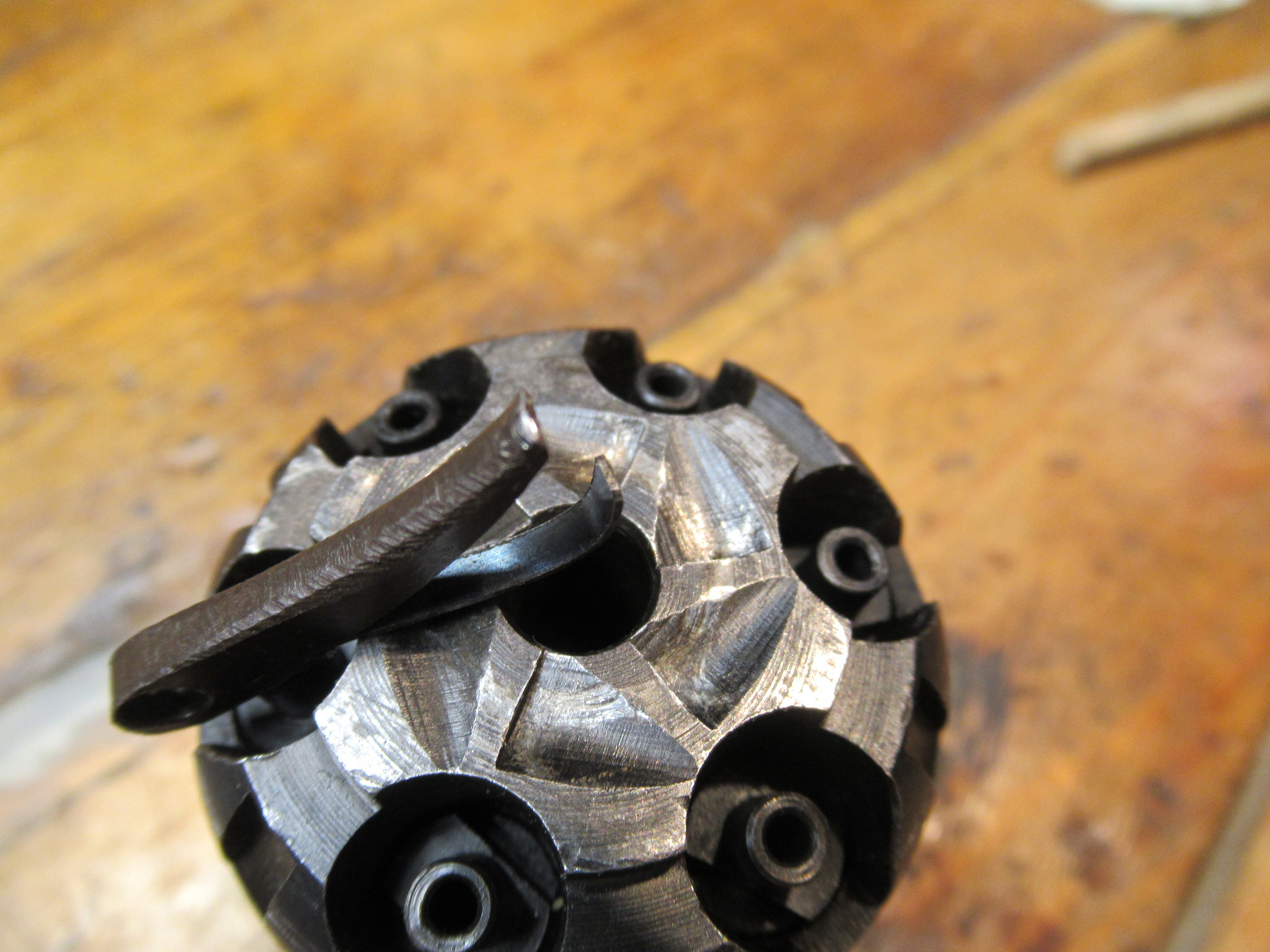Phil Coffins
69 Cal.
Not an expert on Remingtons but I’d be checking on the shape of the hand as it alines with the cylinder. Looks as if the tip is bearing on the ratchet as a point.

I agree, but the hand is good! My guess is the hand is hardened and obviously, the back of the cylinder is soft.
Thanks for your input.
Larry
If you know a really good welder he can stick a tiny drop of hard weld on each chip. You can then work them into shape with files and a Dremel.
I rebuilt a broken tooth on a Walker cylinder like that. You'd never know it had been broken. According to the welder (does aerospace stuff really knows his ####) the new tooth is even stronger than the old ones
Although if it's to that point I'd just replace the cylinder and since they're cheap, along with the stop bolt and the hand.
Good point! Looks OK, but I do not have anything to compare it to.Not an expert on Remingtons but I’d be checking on the shape of the hand as it alines with the cylinder. Looks as if the tip is bearing on the ratchet as a point.

That's actually a really good point.I only wonder when you have a welder do that, and then you finish the fitting..., does that void any of the manufacturer's responsibility if the cylinder for some reason fails in a bad way and somebody gets hurt?
That is a telltale sign he should not have been called a welder!In My Opinion
If you want a welder to do it, find one that does that work frequently and not one that will give it a try
My friend had a welder do work and it looked liked pigeons pooped on it
It was wrecked
That is a good idea, except the issue is not displaced metal, but removed metal. Can't put back what is not there. The hand chewed out the metal leaving a hole.As an expedient/temporary repair, I would remove the cylinder, support atop a sturdy bench top, then peen the displaced metal back into place with a flat-faced drift pin & a 16oz ball peen hammer.
Thanks for your thoughts, but I disagree. IMO both wear surfaces should have some hardening. The hand is good, the culprit is the seemingly soft back of the cylinder.since the hand is harder than the cylinder
Maybe you could soften the hand (pawl) ?
Get it red hot then let cool slowly. When it wears out replace it. Hands are a lot cheaper than cylinders!!
Reading your posts it’s clear that the cylinder is being cut. Replacing the hand with another of the same shape would do the same cutting. A softer hand would wear quicker but not stop the cutting either. With out the gun in hand I can’t say what is happening but a clever fellow like you should be able to figure out what the angles should be and approach the problem in a systematic way. Buying parts isn’t the first step in fixing the issue.
You might get away with welding on a cylinder with black powder use as the pressures are quite low but I never would recommend it. For any weld to take place the steel has to be raised above molten temperature and this most definitely will change the yield strength at the weld for shock load which is a different breed of cat from normal tension stressing. The problem is the metal at the weld will usually be much harder than will the parent metal and this sets up a term called a heat riser which basically is a brittle spot.TIG welding is a possibility, but I do not have the equipment nore the expertise. All other parts seem to be in good condition. I am looking for answers as to what others have done. Cheap cylinder? Don't know where you have seen cheap cylinders, but the ones I have seen are $100 bucks. Not gonna do that yet!
Thanks
Larry
 IMG_0752 by Oliver Sudden, on Flickr
IMG_0752 by Oliver Sudden, on Flickr